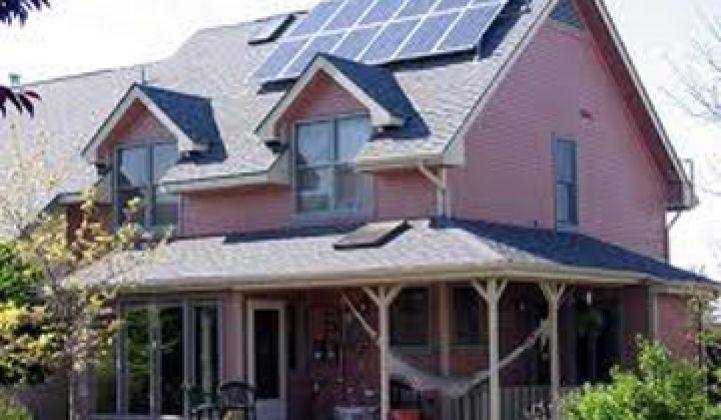Last week, a bipartisan trio of House Representatives announced legislation to reinstate local governments’ right to run PACE energy retrofit programs. By the time the “PACE Assessment Protection Act of 2011” had a bill number assigned this morning, an impressive 15 co-sponsors from both ends of the political spectrum and all corners of the country had thrown their support behind it.
It appears Congress may have what it takes to stage the great PACE comeback.
Many will recall the harrowing tale of these popular programs. PACE (Property Assessed Clean Energy) programs use a tried-and-true municipal finance tool to help property owners make energy efficiency and renewable energy improvements on their homes and businesses at no upfront cost -- and without any taxpayer dollars.
By leveraging private investment to put hammers in hands and boots on roofs in communities nationwide, PACE has enormous potential to simultaneously address two of our most critical challenges: energy and the economy. So much so that over the span of just a couple years nearly 30 states and the District of Columbia enabled their local governments to implement PACE programs.
The nation’s PACE opportunity was stymied last July when Fannie, Freddie and then their regulators at the Federal Housing Finance Agency (FHFA) declared they would not underwrite mortgages for PACE participants, mistakenly deeming them too risky and undermining local government rights in the process. Because Fannie and Freddie currently back 90% of all mortgages in the U.S., the statement was enough to put nearly all local PACE programs on hold.
Now Congress is working to clear the way for PACE. The PACE Assessment Protection Act, introduced by Representatives Nan Hayworth (R-NY), Daniel Lungren (R-CA) and Mike Thompson (D-CA), addresses three key issues:
- It undoes the damage. The Bill rescinds the 2010 guidance from the FHFA, OCC, Fannie and Freddie that derailed PACE in the first place. It further prohibits these groups from discriminating against homeowners and communities participating in PACE programs.
- It resolves the legal question. Much of the FHFA’s legal arguments against PACE have been founded in the erroneous assertion the programs administer loans rather than assessments. This isn’t semantics -- a loan is the purview of the FHFA, but an assessment is a century-old constitutional right of local government. This bill correctly defines PACE as an “assessment” rather than a “loan” once and for all.
- It virtually eliminates risk to Fannie and Freddie. Nobody wants to see these entities, already over $150 billion in debt with taxpayer dollars on the line, go further into the red. The bill establishes national PACE program standards to further reduce the chance that a participant would default, including criteria such as participant underwriting, consumer protections, qualifying improvements and qualifying contractors.
As mentioned, the legislation is in the enviable position of having strong support from both sides of the aisle. "It's not Democrat. It's not Republican. It's not conservative. It's not liberal. It's just good common sense," said Rep. Lungren during a press conference introducing the bill, adding, "It's nice to come together." His colleague across the aisle, Rep. Thompson, concurred: "This is too important to our energy future, too important to job creation across the country. And it’s the right thing to do.”
PACE’s rather unique mix of issues -- energy savings, small government, budget-friendly finance, environmental benefit and, above all, economic development -- appears to have effectively cut through partisan politics on the Hill.
Data from the few PACE programs that launched before the mortgage giants took action show that PACE's job creation potential is no empty promise. Sonoma County experienced a 7% increase in construction jobs, a boost that it attributes to PACE retrofit work. Those rosy numbers run in sharp contrast to neighboring counties, which saw a 2% to 3% decrease in construction jobs during the same period.
A new report commissioned by PACENow further quantifies PACE's economic potential: if just 1% of U.S. homeowners participated in the program by installing a $20,000 project, more than 226,000 jobs would be created, along with more than $40 billion in economic activity and more than $4 billion in tax revenue.
Results from the same pioneering PACE programs have also shown that those high economic returns come at little risk to lenders. Of the 2,565 homes with PACE assessments currently in place around the country, there have been only two defaults.
That’s 1/30th of the national average default rate. And it's a predictable outcome, as well-designed PACE programs deliver energy bill savings that outweigh the project costs, thereby putting homeowners in a better financial position.
The irony that PACE has actually saved money for the FHFA is not lost on us.
***
Rosalind Jackson is director of communications and development at the Vote Solar Initiative. In April, she reported about programs to use solar to curb deforestation in Madagascar.



